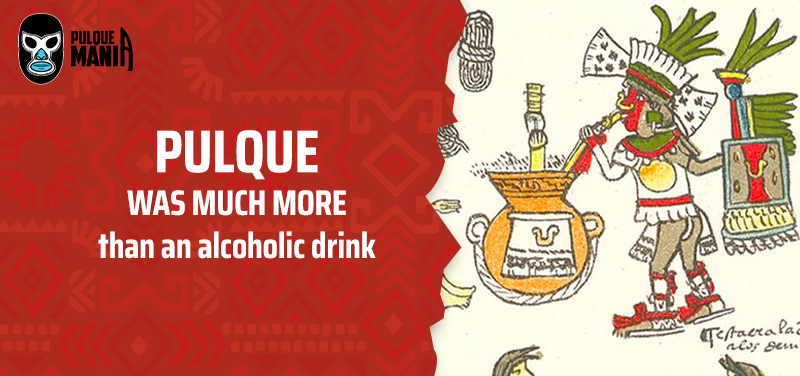
It is an alcoholic beverage that is extracted from the maguey, its consumption dates back to pre-Hispanic times and since then it has remained. Several times a year the Aztecs celebrated Ometochtli, one of the many deities within their mythology, the curious thing is that they did not do it with offerings or with human sacrifices, but allowing both children and adults to get drunk with a striking liquid white obtained from the maguey, drink of the gods for them, for us: pulque. Drink that from Mexica times and up to the present day became one of the emblematic Mexican drinks, until it was displaced first by tequila and then by mezcal, both also obtained from maguey but by a distillation process and not of fermentation. MEANING In Mexica times, pulque was called ixtac octli (“the white liquor”). The current name appears to be a Spanish corruption of octli poliuhqui (“decomposed liquor”), the Nahuatl term for an overly fermented pulque. ONE OF THE LAWS ABOUT THE ORIGIN OF THE MAGUEY… Mayahuel was a young woman who lived with her grandmother, whom the god Quetzalcóatl convinced her to come down to earth to love each other, so they each became a branch of a forked tree. The grandmother flew into a rage, and she along with other women went ashore to look for her granddaughter. As they approached, the tree broke and Mayahuel was exposed. The enraged grandmother tore the branch into pieces, and she left them there to be devoured. Instead, Quetzalcóatl’s branch was left unharmed, as the women walked away, the loving god took the remains of his young love and buried them. The maguey plant sprouted from it, and that is how Mayahuel became the goddess of Fertility and Mother of the Centzon Totochtin, the Four Hundred Rabbits, little gods of Pulque and Drunkenness. In Mexica or Aztec society, pulque had a merely ritual character, so it could not be consumed except at certain festivals and in some in a restricted manner. PREPARATION The process for the preparation of this intoxicating drink begins by extracting the sap from the plant, which was previously castrated to interrupt the growth of its central bud or quiote, cutting it when the agave has matured after a period ranging from 7 to 15 years. A cavity is drilled in its heart or pineapple by scraping it so that the liquid flows out. For about six months before the agave dries, the mead flows and is collected twice a day, in the morning and in the afternoon, a process carried out by the person in charge of this activity or tlachiquero, who uses an elongated gourd and hollow, that is to say an acocote, with small perforations at both ends. The tlachiquero, whether man or woman, places one end of the acocote in his mouth to suck the mead, and then carefully pours it into a ceramic pitcher, a wooden barrel or a sheep or goat skin to transport it in his back tied with a tumpline on the forehead, or tied with ropes to move various containers on the back of a donkey. In the tinacal, that is, the place where the mead will be fermented, this liquid is placed in clean containers, traditionally ceramic pots and, since the colonial period, in vats that contain a little pulque or seed, thus beginning the biochemical process that lasts one to two days. VARIETIES OF PULQUE Apart from the ritual use that was made of pulque during the celebrations of the pulque gods and Mayahuel, it was also used in festivals dedicated to other gods of the Mexica pantheon. For all these ceremonies the Aztecs had various kinds of pulque. The iztac octli, white pulque, which we now know as mead; the ayoctli, made with mead rested for several days; these two guys drank at the Fiesta de los Bateos. The blue pulque, matlaoctli, was drunk by the elderly, the married and the main lords in their houses, after the sacrifice of the slaves in the Panquetzaliztli festival of the fifth month. The pulque called texcalceuilo, was drunk by the elderly in front of the statue of Milintoc, in their temple of Tlatelolco, during the festival of the month Izcalli. The so-called uiztli was the new pulque, and the teometl was offered to brave warriors and wise men; and teoctli, came from the gods, was consumed by the priest Ome Tochtli during his religious services.


